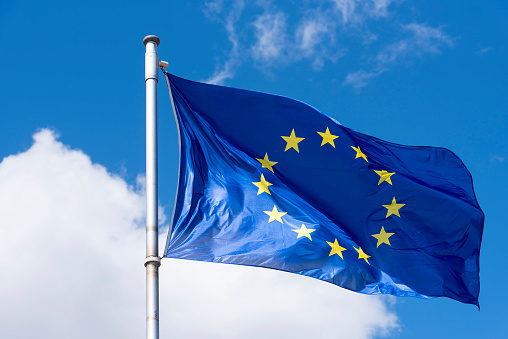Diversifying the Saudi Arabia Economy
Currently, Saudi Arabia is the fifth largest country in Asia and the second largest in the Arab world. This country is situated on the Arabian Peninsula and has a total land area of 2,150,000 km2.
Oil revenues
Despite the recent decline in the oil price, Saudi Arabia continues to be one of the leading oil exporters in the world. It has also made a concerted effort to diversify its economy. The kingdom has undertaken over 600 structural reforms and legislative measures to boost its non-oil economy. This strategy has helped strengthen the country’s economic performance.
To diversify its economy, the kingdom has launched a National Investment Strategy (NIS). Its goal is to raise potential GDP growth by 4.8 percentage points. It also calls for establishing a renewable energy sector by 2020. It is expected that this strategy will lead to a more sustainable development trajectory for Saudi Arabia in the 21st century.
Saudi Arabia’s non-oil economy has seen a slow but steady growth. Its share of GDP has increased from 45.2% in 2011 to 38.8% in 2021. Increasing the share of non-oil activities will increase the country’s investment attractiveness to growth investors. However, the government must accelerate its diversification effort.
In addition to diversifying the economy, Saudi Arabia must also accelerate structural transformation. The country’s fiscal strategy should include regular checks on public spending efficiency. Inefficient spending could affect the country’s assessment of a sustainable deficit. If high-quality spending improves the economy’s growth potential, it could serve as a catalyst for private investment.
The ministry of finance released a preliminary 2023 budget report on September 30. It estimates government spending at 1.11 trillion riyals. These figures are based on a conservative scenario. It expects the tax-to-GDP ratio to be 14 percent by 2027. The government pays for generous benefits for its citizens.
The kingdom’s economy is expected to grow by 7.6% in 2022. This growth is expected to increase in the following year, as the country’s oil revenues continue to rise.
Non-oil industries
During the past four years, Saudi Arabia has been working to diversify its economy. It has launched various initiatives, including the Saudi Vision 2030, which aims at developing promising sectors and boosting employment opportunities. In addition to this, the Kingdom has launched the Made in Saudi Program to promote local industries. These initiatives are expected to boost the growth of the non-oil sectors, which will help secure a sustainable economic development.
Saudi Arabia’s economy is expected to grow at a faster rate than ever before. The country is expected to reach a GDP growth rate of 4.1 percent in 2007. This could be one of the fastest-growing economies in the world this year.
In addition, the non-oil private sector economy showed strong business activity in March. In March, the seasonally-adjusted S&P Global Purchasing Managers’ Index climbed to 56.8 from 56.2 in February. The index has shown strong growth in the past 25 months, which suggests that the economy is poised for continued growth.
The Manufacturing PMI Index showed improvement in output and purchasing power. New orders also remained positive territory. In addition, new clients showed an increase in number. This resulted in an overall improvement in the output and purchasing power of the Saudi economy.
In order to support the economic growth of the non-oil sectors, the Saudi Government has implemented more than 600 legislative and structural reforms. These changes include structural reforms to support the non-oil sectors, as well as the introduction of the Saudi Industrial Development Fund and the Regional Headquarters Policy.
In addition to these structural reforms, the Kingdom also plans to spend more money on infrastructure projects, which will boost the capacity of the oil sector. It also aims to promote tourist sites and develop heritage sites. This will increase the contribution of the tourism sector to the economy.
Commercial sector
Currently, the Commercial Sector of Saudi Arabia Economy is a vibrant sector. It’s expected to increase in size by 2020. The market size is estimated at USD billion. The government agencies publish lists of investment opportunities.
Saudi Arabia has been making progress in tourism and manufacturing. Its industrial and manufacturing sectors are thriving due to a variety of factors, including high quality utility supplies, infrastructure, and a diversified ecosystem. It has also launched initiatives to boost tourism and increase global competitiveness.
Vision 2030, the Kingdom’s vision to diversify its economy, is a major driver of economic diversification. It’s also been working to improve Saudi’s financial market and expand the funding sources for companies. The goal is to create new job opportunities. 4.5 million Saudi youth will enter the workforce by 2030. It’s also worked to boost the participation of Saudi women in the private sector.
Saudi Arabia has a diverse economy, and the commercial sector plays a major role in its development. It has attracted major international companies to set up their headquarters in the Kingdom. It also has a modern banking sector and provides a variety of services.
In addition to the commercial sector, Saudi Arabia has an industrial sector. It produces petrochemicals, cement, steel rods, industrial ethanol, and fodder. It has also made progress in mineral, transport, and renewable energy production. It has also worked to diversify its economy by opening new sectors to foreign investment.
The government has also been providing incentives to foreign companies. Its most powerful resource is Saudi workers’ skills. The government also encourages private sector involvement in industrial development. Its policies have helped to launch thousands of new factories. It has also removed sponsorship requirements.
Hospitality industry
During the last decade, the hospitality industry in Saudi Arabia has seen a significant increase in the number of hotels. The growth of the industry is attributed to the increase in the number of tourists who come to Medina and Mecca.
The Saudi government aims to attract 100 million visitors to Saudi Arabia each year by 2030. The government has allocated SAR 110 billion to increase the hospitality industry in Saudi Arabia. This will allow the country to create new career opportunities for the young generation.
The hospitality industry in Saudi Arabia is a combination of international brands and domestic chain hotels. The government has been investing in infrastructure to meet the growing demand. The industry has also been welcoming new investors to the region.
The hospitality industry in Saudi Arabia aims to develop a world-class industry that will give back to the community and inspire the youth of the country. The government is also attempting to reduce its dependency on the extraction industry.
The tourism industry in Saudi Arabia is undergoing a fascinating transformation. This will help raise the region’s profile as a key hospitality player. Various high-profile projects are underway in the country. The development of 90 luxury islands in the Red Sea and the Qiddiyah Project are some of the major projects.
In addition to the development of these projects, the Saudi government is also investing in infrastructure to meet the growing demand. It has also announced a $530 million fund to develop key destinations in the country. The Saudi government is aiming to increase the tourism revenue from 4% to 10% of the GDP by 2030.
The hotel sector in the Middle East has around 600,000 rooms in planning. It is expected that this growth will continue throughout the coming years.
Energy sector
Currently, the energy sector of Saudi Arabia economy is experiencing a transition. The country is working towards a more sustainable energy future. While the country has made progress on certain indicators, it is clear that there are still many challenges. Among these, there are high demand growth and lack of time-of-use rate adjustments.
Saudi Arabia’s energy transition should be supplemented by promoting a sustainable lifestyle. Specifically, the country plans to increase its share of renewable energy sources. It also plans to invest in solar and wind power plants. By 2023, Saudi Arabia hopes to produce 10 percent of its energy from renewable sources.
In addition, Saudi Aramco is increasing its gas production, which is an important factor in decreasing the carbon intensity of the country’s economy. The Kingdom expects its gas production to reach 238 billion cubic meters by 2030. The gas will be used for feedstock in petrochemical projects. The country also plans to import gas in the future.
The country has also been working towards reducing its gas burning. It has developed three processing facilities, including a natural gas liquids processing plant. It has also developed a network of pipelines.
The country has also developed expertise in carbon capture. It has a Hawiyah plant that sequesters 800 thousand tons of carbon dioxide every year. In addition, the country has imported hydrogen power buses. It also signed a memorandum of understanding with Germany in 2021.
The Kingdom also launched a circular carbon economy concept during its presidency of the G20 in 2020. The initiative will help increase sustainable living and improve quality of life in the region. The Kingdom plans to reduce its carbon emissions by 130 million tons by 2021.



